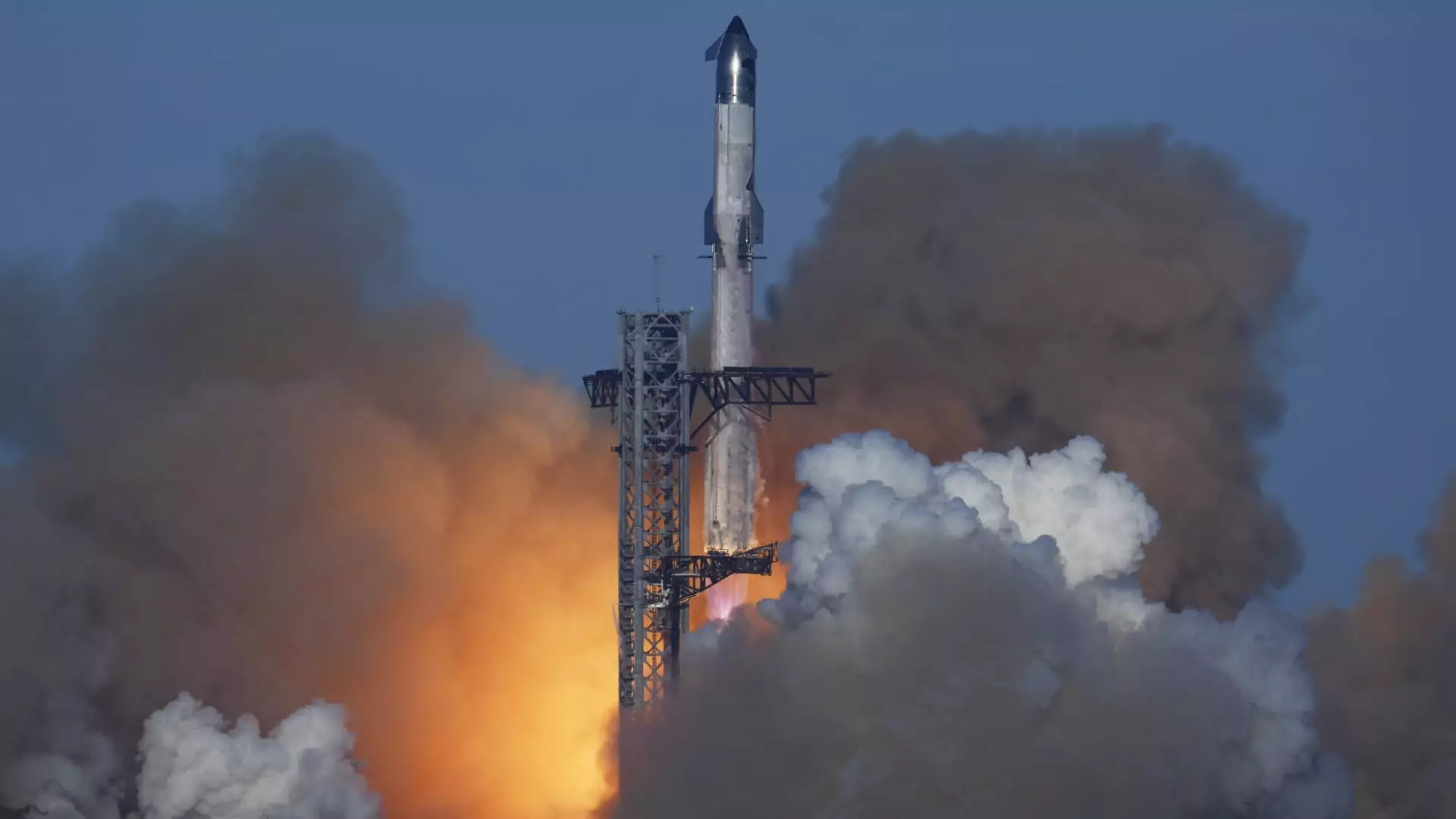On Friday, the Federal Aviation Administration (FAA) made a crucial announcement regarding SpaceX’s Starship rocket, declaring it grounded indefinitely. This unprecedented move follows a catastrophic midflight failure during a recent test flight that led to a significant incident involving airline operations across the Caribbean. While thankfully, no injuries have been reported, the FAA noted that there was public property damage in the Turks and Caicos islands. The grounding of Starship not only halts SpaceX’s ambitious timetable for space expeditions but also reflects the stringent regulatory landscape surrounding commercial spaceflight.
The FAA’s directive has had a ripple effect on commercial aviation, forcing several airlines, including American Airlines, JetBlue Airways, and Delta Air Lines, to divert and delay many flights. Such actions highlight how intertwined space exploration has become with everyday airline operations. The fallout from the rocket’s midflight failure, which resulted in debris raining down shortly after launch, raises broader concerns about safety protocols and the implications for both passenger travel and commercial space ventures.
SpaceX’s preliminary assessment indicates that a fire within the Starship vehicle led to its disintegration in midair. Eyewitness accounts, accompanied by social media videos, vividly captured the moment of detonation, further emphasizing the risks associated with space missions. This incident marks another chapter in the ongoing challenges of developing viable, safe operational practices for advanced spaceflight technologies. The regulatory body, in response to the debris fall, established a “Debris Response Area” to alert aircraft of hazardous debris, illustrating the need for clear communication and safety measures in compound scenarios involving both aerospace and aviation sectors.
Adding complexity to the situation, there was a notable discrepancy between initial statements from SpaceX and the FAA’s account of the incident. SpaceX had initially reported that the Starship debris landed within predefined hazard areas, which contradicted the FAA’s rationale for activating the response area. By Friday morning, SpaceX had omitted this specific language, opting instead for a more generalized claim regarding the location of debris fall. This shift raises critical questions about transparency and accountability in the rapidly evolving space industry.
Looking ahead, SpaceX is now in a situation where it must undergo a thorough investigation and implement necessary corrective actions before the FAA will consider reissuing a launch license for Starship. This process is crucial for maintaining public confidence and ensuring that operational protocols are in place to prevent future incidents. The incident highlights the significant responsibilities that companies like SpaceX bear while navigating the promising yet perilous frontier of space exploration. With stringent oversight by the FAA, the future of commercial space travel may hinge on the delicate balance between pioneering innovation and adhering to essential safety regulations.
Overall, the FAA’s decision and the subsequent events underscore the challenges and responsibilities that accompany the ambition of reaching new frontiers. The road ahead may be fraught with regulatory scrutiny, but it is essential for ensuring the safe progression of both commercial aviation and space exploration.

